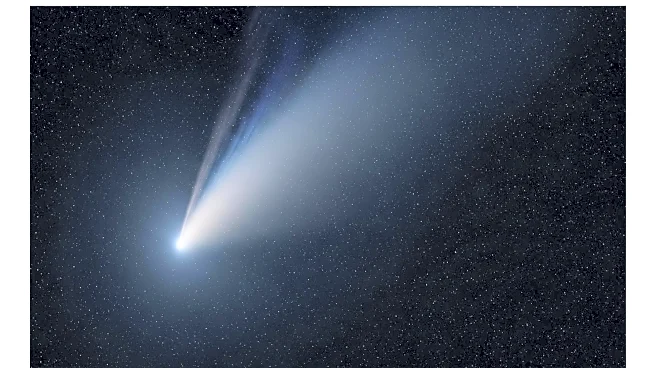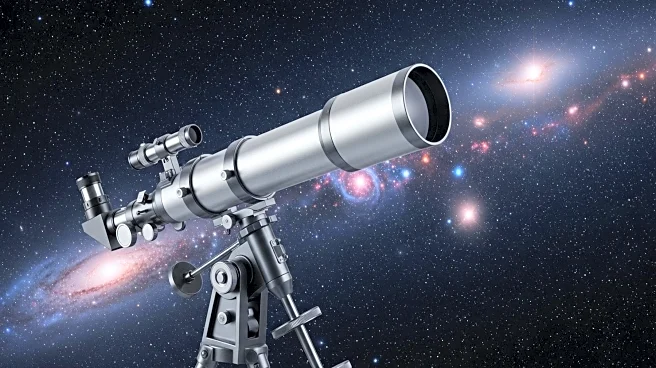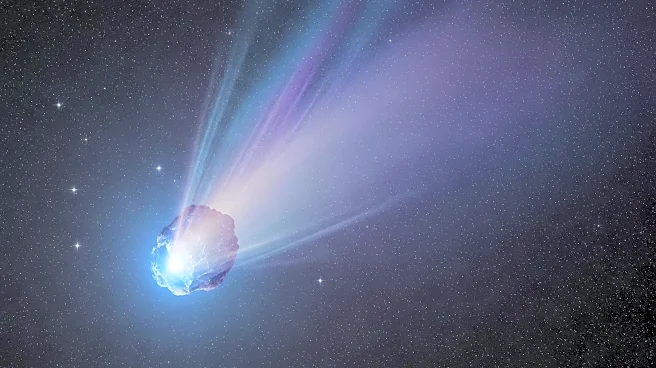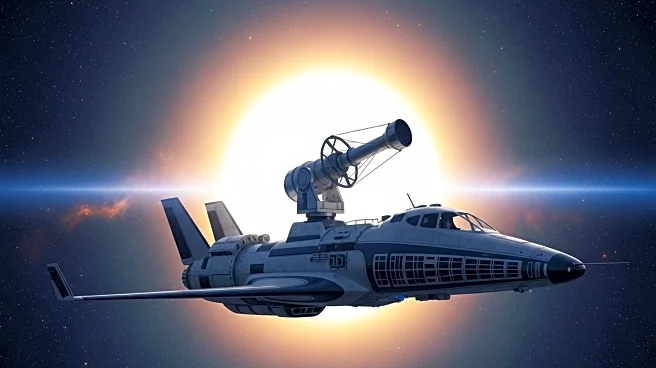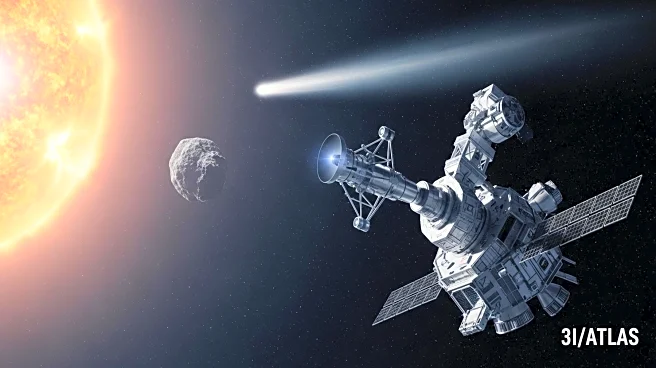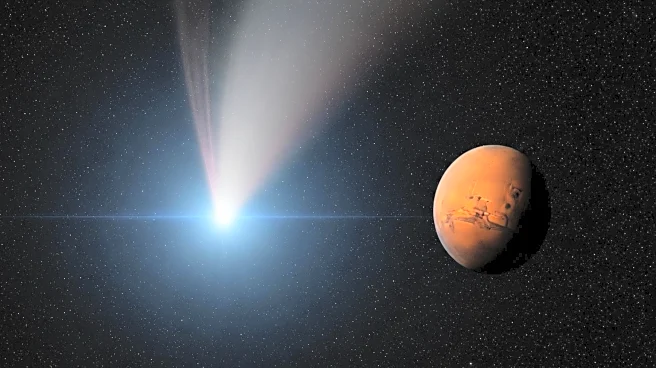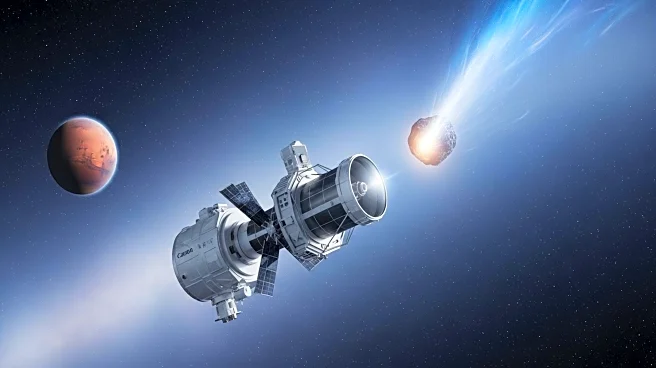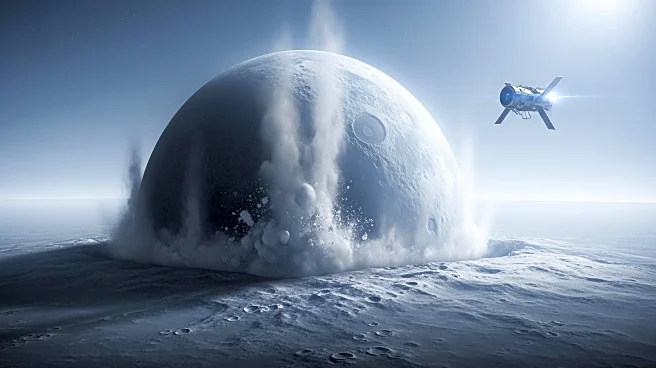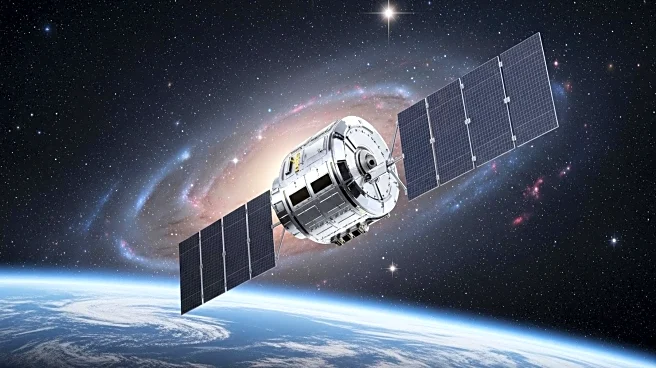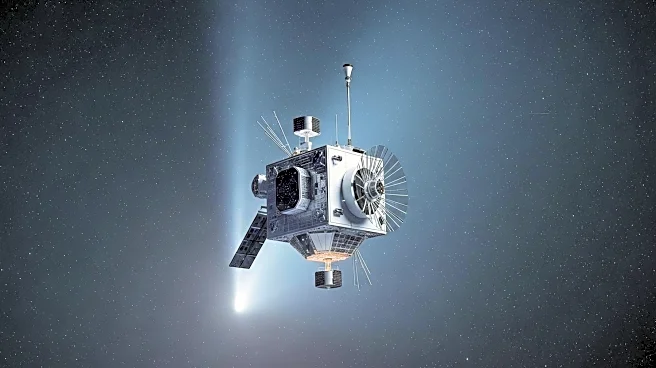What's Happening?
NASA's James Webb Space Telescope has captured a stunning image of the Lobster Nebula, revealing a vibrant scene of star formation. The image showcases Pismis 24, a young star cluster located approximately 5,500 light-years away in the constellation Scorpius. This region is a significant site for studying massive star birth due to its proximity to Earth. The image, taken in infrared light by Webb's NIRCam, displays thousands of stars of varying sizes and colors, with the most massive stars exhibiting six-point diffraction spikes. The cluster's central star, Pismis 24-1, was once thought to be the most massive known star but is now understood to consist of at least two stars. The image also highlights the impact of super-hot, infant stars on their surroundings, as they emit intense radiation and winds that shape the nebula's structure.
Why It's Important?
The observations made by the James Webb Space Telescope provide critical insights into the processes of star formation and evolution. By studying regions like the Lobster Nebula, scientists can better understand the lifecycle of massive stars and the conditions that lead to their formation. This knowledge is essential for comprehending the broader dynamics of galaxies and the universe. The data collected by Webb also complements previous findings from other telescopes, such as Hubble, enhancing our understanding of cosmic phenomena. The ability to observe such distant and dynamic regions of space underscores the technological advancements achieved by the Webb telescope, which continues to push the boundaries of space exploration and astrophysics.
What's Next?
As the James Webb Space Telescope continues its mission, it will likely capture more detailed images of star-forming regions and other cosmic phenomena. These observations will contribute to ongoing research in astrophysics and may lead to new discoveries about the universe's structure and origins. The international collaboration between NASA, ESA, and CSA ensures that the data collected will be shared and analyzed by scientists worldwide, fostering further advancements in space science.
Beyond the Headlines
The images captured by the James Webb Space Telescope not only advance scientific knowledge but also inspire public interest in space exploration. The visual representation of distant cosmic events brings the wonders of the universe closer to people on Earth, highlighting the importance of continued investment in space research. Additionally, the technological innovations developed for the Webb telescope may have applications beyond astronomy, potentially benefiting other fields of science and industry.

